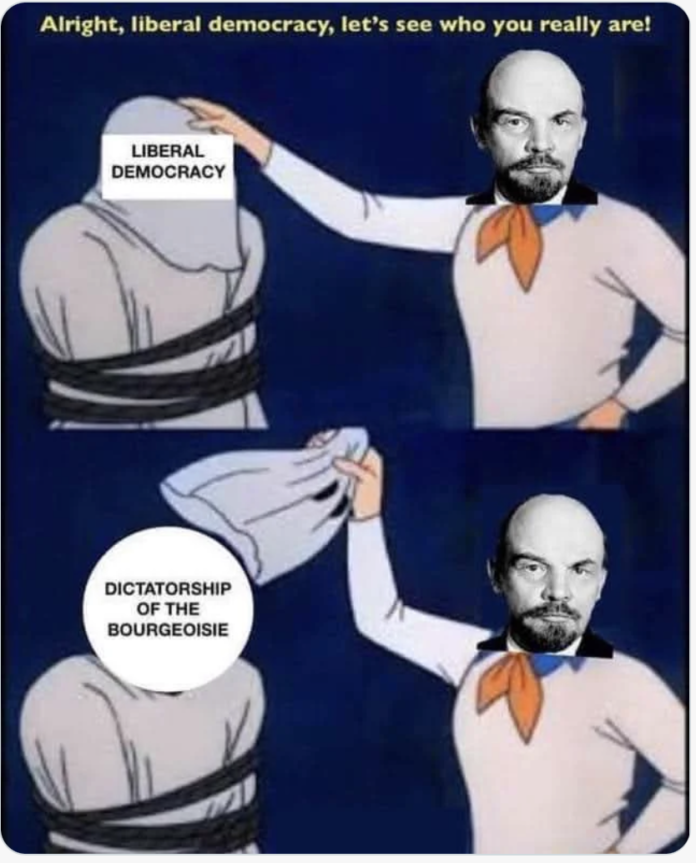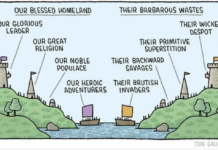Inflation is back worldwide, and with it is the blame game. So what is the truth behind the claims and counterclaims that are being made?
First, a little background.
An impending worldwide recession in late 2019, foreshadowed by a freeze in the US repo markets, led the US Federal Reserve to embark on a significant amount of money printing. Interest rates were pushed down to free up credit.
In early 2022, public health measures — economic closedowns — imposed in response to the Covid-19 pandemic further disrupted world production and trade. Both money printing by central banks across the globe and government budget deficits were massively expanded to cope. Interest rates were driven below zero in some cases. People were being paid to borrow money – imagine that.
The monopolies dominating global production and trade also seized on genuine or manipulated shortages to impose price gouging wherever they could. The profits of energy companies, for example, simply exploded as a consequence.
Most central banks, including the Reserve Bank of New Zealand, ignored the growing inflation and sought to blame the temporary supply chain disruption for the price increases.
Rightwing economic and political voices schooled in the “monetarist” schools of thought, which say inflation is always a monetary phenomenon (although none of them agree on what money is), stayed silent. They sensed that their system had dodged the bullet of a broader economic collapse. The extraordinary explosion in the global asset wealth of the ruling class that kicked in over late 2020 and through 2021 was also a factor in muting criticism, I’m sure.
But these same monetarists were supposedly in charge of economic and monetary policy in 2008 when the US Federal Reserve started the process of money printing, dubbed “Quantitative Easing,” for the first time around to get out of the deepest crisis of world capitalism since the 1930s Great Depression. They had ignored their theories to save their system then. It seemed to work that time without triggering broader inflation than in their assets, so, they hoped, maybe it would also work this time.
But today, we have inflation averaging 6-10% over much of the globe. These are numbers not seen for decades. Turkey, Argentina, and Sri Lanka have inflation rates of 60-80 percent.
In these circumstances, the risk was that continuing expansionary monetary policies wiould unleash hyperinflation of the US dollar in particular, which will destroy its value and end its role as the dominant world currency. From the point of view of the 1% owners of the world’s wealth, that must be prevented at all costs.
Hyperinflation was threatened once before in the late 1970s when US inflation hit 13%, and there was a flight from the dollar into gold which doubled in price over a few months in late 1979. This required what was dubbed the “Volker Shock” in the name of the then US Federal Reserve Director Paul Volker, who stopped “easing” the monetary expansion and restored confidence in the dollar by pushing the Fed’s official interest rate up to 20%
Government spending on welfare and education was also targeted for cuts. “Austerity budgets” became the norm. Aiming for a budget surplus became economic orthodoxy across the major capitalist nations, although this was only achieved temporarily in the US, given the demands of its permanent wars of empire across the globe.
After the inflationary 1970s in New Zealand, we had our version of the Volker Shock under the new Labour Government elected in 1984, and the official interest rate reached an all-time high in 1985 of 18%. Variable mortgage rates hit 20%.
Financialisation and deindustrialisation
Of course, capitalists who were in the business of lending money rather than producing goods were massively advantaged by high interest rates. There is also no reason to open a business unless the profit rate is above the cost of money. Marx explained in his masterpiece “Capital” that a capitalist will never invest in new production unless the profit of enterprise is sufficiently above the rate of interest to be able to generate at least the average rate of profit which they need to remain competitive. That is the economic origin of financialisation and de-industrialisation in the advanced capitalist countries as literally, General Electric became GE Capital.
The one percent don’t care how they make their money. But accumulated wealth needs to be stored in both financial and non-financial assets. Historically this was broadly a 50/50 share, but a gap has opened in favour of financial assets since 2008.
The 1% hate inflation with a passion as it reduces their financial asset values by that percentage or more. Working people also get angry at price increases and may join protests and strikes to protect their living standards. And, in normal circumstances, central banks will move to raise interest rates and slow the economy to stop it. This will, at least temporarily, hurt profits and sharemarket prices, but that is the cost of restoring price stability.
But in 2008 and 2020, central banks tried to keep the economy from contracting further than it already had (in 2008) or was expected to do (in 2020) by printing money through another round of what is called “Quantitative Easing”. In 2008 this had not led to much inflation as the recession had already hit hard in the US, so the money was hoarded by the 1% or used to settle debts among themselves rather than boost spending more broadly.
But the latest round of quantitative easing involved both central bank money printing and government budget deficits to save the system. The money was also given to ordinary people to spend. Inflation was inevitable in these circumstances as I will explain.
It is the owners of wealth that determine central bank and government policies on these matters, and the war on inflation will continue for as long as necessary to achieve their goals and be justified as essential for a nation’s economic survival.
The rightwing politicians and their economic “thinkers” dubbed monetarist economists have rediscovered their orthodoxy and say the fault lies with too much government spending and too much central bank money printing. Unfortunately, they are correct to an extent, but without fully understanding why. The question they need to be asked is why they stayed silent when it was happening.
Budget deficits as a cause of inflation
In the 1970s, the principal means of creating money and fuelling inflation was to run budget deficits. The US also needed to do this to finance the war in Vietnam. The economic orthodoxy at that time became known as Keynesianism after the UK economist John Maynard Keynes. Keynes was an upper-class, classical, pro-capitalist, free-market economist. But he accepted that their must be something wrong with the classical view when the economic depression that couldn’t happen under those theories did happen in the 1930s.
He came to the view that the economy may need the assistance of lower interest rates from central banks or a budget deficit at times to stimulate demand and employment. Robert Muldoon in New Zealand, Prime Minister and Minister of Finance from 1975 to 1984, and US President Richard Nixon (1969-1974) were public supporters of Keynesian policies despite their right-wing politics. Keynes also was not a friend of workers. He thought the cure for inflation was to cut wages through wage controls.
However, in the period after World War Two, budget deficits became endemic. The result was dubbed “Stagflation,” a combination of inflation and economic stagnation. This is the worst of both worlds for working people because wages are cut by inflation while our ability to resist is undermined by high unemployment. That is why socialists don’t favour Keynesian policies over monetarist policies. It’s the capitalist system and its inevitable crises that is the problem, not the policies designed to manage the crises.
The Keynesians were removed from operational control and replaced by adherents of the Monetarist school. The principal theorists of monetarism were from the University of Chicago School of Economics, led by Milton Friedman. As well as allegedly wanting to control inflation, they were also radical free-market dogmatists who favoured austerity for workers, free trade in goods, free movement for capital, free interest rates, and the privatisation of everything, including education and health care. They also support eliminating the minimum wage and unions because these “interfere with the market”. The Act Party in New Zealand is an adherent of this school. They favoured tax cuts for the rich and regressive consumption taxes like GST on the rest of us.
With monetarists in charge, budget deficit financing was sharply curtailed – especially on spending that assisted working people – like welfare, health, and education. Infrastructure spending was starved. Lierally millions of people have died as a consequence as even the richesst nations on earth have struggled with the impact of the Covid-19 pandemic because core state functions had been starved for decades.
Central Banks like New Zealand were made “independent’ with the exclusive goal of targeting inflation to keep it low. The money supply was to be controlled through interest rate increases each time the economy started growing a little and unemployment began falling. Conveniently for the right-wing political leaders, their theories are also deeply anti-working class.
The “Chicago Boys” as Friedman and his colleagues came to be known, were invited to Chile to transform the economy in favour of the rich under the military dictatorship of General Augusto Pinochet after he seized power from a socialist-minded government in a coup in 1973.
The UK followed Chile’s policies under Prime Minister Margaret Thatcher in 1979, the US under President Ronald Reagan in 1981 and New Zealand in 1984 led by a Labour Party government Finance Minister and future Act Party leader, Roger Douglas.
Neoliberalism triumphant
These policies were dubbed “neoliberalism” to mark them out from the previous Keynesianism. It was theoretically possible for a government to stop the budget deficits and fight their inflationary impact by taxing the rich or eliminating war budgets. But, no capitalist government from that time tried to do that, of course. Adherents of monetarism and its free-market dogmas were put in charge of every aspect of government policy. That is why the economists at the New Zealand government agency responsible for the labour market policies – the Ministry of Business Innovation and Employment – predict every year that the proposed rise in the minimum wage will lead to more unemployment when the opposite has happened year after year for the last two decades and the minimum wage went from 40-60% of the average wage.
The monetary side of these policies was abandoned almost overnight when the 2008 crisis hit. Quantitative Easing became the norm across the advanced capitalist world except in Australia and New Zealand.
This was considered necessary to stop a system-wide collapse of the banking and financial system in the US and Europe. All forms of debt exploded across the globe, but this was seen as the price of the rescue of the private profit-seeking system. But then the recovery of world capitalism following that was the slowest in the history of capitalism. It was becoming clear that the world was gearing up for a renewed slowdown in late 2019, and then the pandemic hit.
The capitalist rulers knew they needed new doses of money printing and government spending to save their system. Capitalists only produce if they can sell goods for a profit. They only lend money if they feel they will get their money back with interest. Essentially the state in almost every country has stepped in to protect those profits whenever they get threatened.
A central bank can create money by simply printing it electronically. What that gets used for, however, is something that can be different in different periods. During the most recent crisis, the US used the money to buy up bonds from distressed banks and industrial corporations to prevent them from going under.
The New Zealand Reserve Bank joined the Quantitative Easing club in 2020 and $28 billion was given virtually free to the banks to lend directly to whoever they wanted. They gave most of it to property speculators who drove up house prices by 30% in one year. Another $100 billion was made available to the government to prop up businesses during the pandemic.
This also allows the government to run big budget deficits without horrendous interest rates being demanded (at least initially) by the private financial capitalists for the bonds they issue to finance the debt. This is “unorthodox” by any measure but was considered necessary by everyone as the crisis hit.
Now we are being told that the Central Banks will be returning to more orthodox policies over the medium turn. This means the central bank must retire the bonds that it has created by buying them back, and they need to push up interest rates to do so.
But, in the absence of taxes on wealth, the budget deficits are also being targeted because they create spending artificially – a form of money creation but different from the central banks printing money directly. Reducing these deficits will be contractionary for the economy.
This will inevitably induce a recession in New Zealand over the next year or so. This is also true for Europe and the US, and the whole globe. The cost of the rescue of the capitalist profit-seeking system will now be unloaded on working people because the crisis that is coming has been made that much bigger and more dangerous by the escalating debt levels.





The Fed can’t return to an orthodox policy. They refuse to come up with a scheme to write off the huge amount of unpayable debt (as they are terrified of Occupy Wall Street 2.0), and they would never consider a full return to free markets (i.e. allowing mass defaults, mass bank collapses and the Great Depression II).
The only remaining option is inflation: more massive debasement of the currency by returning to Q.E., in an attempt to inflate away the debt.
If Powell tried to permanently normalise rates without dealing with the debt, the Federal Government would default on its obligations (spending is already ~160%+ of tax receipts), and mass bank runs would leave depositors fighting over the ~0.6% of deposits which actually exist as Vault Cash.
we won’t do anything outside neo-lib orthidoxy and our ‘economists’ are 3rd rate we can only quote freidman like a mantra
The dates are interesting, -don’t you think?
“What is to be done?” then Mike…you have described the problems created by, and processes of capital and finance capital very well.
Us poor sods that comprise the majority of humanity are being held to ransom by a tiny elite of sadistic exploiters who privately appropriate socially produced wealth. Capital has endured by armed state force, global imperialism and crunching the ideological battle with media channels.
Does that mean it does not matter whether National or Labour wins the election cause economic matters will not improve unless they are brave enough to implement wealth tax, capital gains and death duty taxes. And it seems neither of the two main parties want to do this. So, on that note where does this leave us as a country?
Capitalism benefits those with the most capital.
Financial Transaction Tax as the only tax. Fair and most difficult to evade. It would also ruin currency speculators ans liberate all ‘tax minimization” specialists from shackles of their offices so they would wbe able to plant and harvest fruit and veges.
All other tax systems are too complex and full of loopholes.
Wealth tax gives governments the power to seize private property. Anyone who thinks that 1. The rich won’t find a way to avoid it AND 2. Governments won’t use it to reposes the property of the majority I naive.
Real western inflation since the 70s has been 10% on average. Government figures are designed to hide the true rate. Inflation is great for the rich and governments because real assets compensate while the cost of paying the majority reduces. It is unlikely they will ever give up on this trick.
Inflation is also created by fractional reserve banking.
I’m not sure what the solution is but I suspect it will have to be something like us all becoming a corporations and fighting fire with fire.
the US is bankrupt… the MIC is the only thing holding it together. Russia and China will have it on its knees when they cut off the Taiwanese semiconductor trade.
Comments are closed.